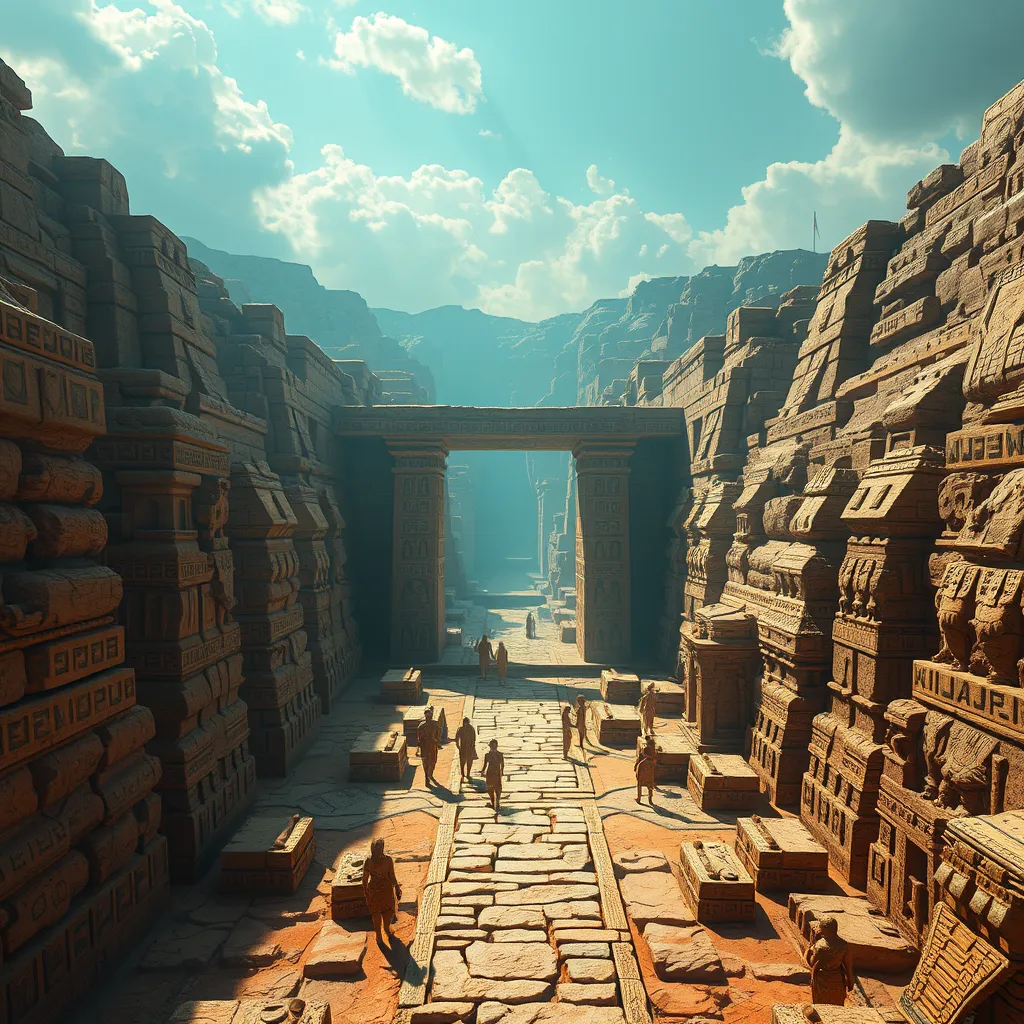The Duat: A Realm of Hidden Wonders
I. Introduction to the Duat
The Duat, a term deeply rooted in ancient Egyptian mythology, serves as a fascinating realm that embodies the afterlife. It is depicted as a mystical land through which the souls of the deceased must pass to reach eternal rest. The significance of the Duat cannot be overstated, as it reflects the ancient Egyptians’ beliefs about life, death, and the afterlife.
This article aims to delve into the intricate layers of the Duat, exploring its historical context, geographical features, divine inhabitants, and the journey souls undertake within this enigmatic realm.
II. Historical Context of the Duat
The concept of the Duat has its origins in the earliest beliefs of ancient Egyptian civilization, evolving over millennia. Initially, it was a vague notion of the afterlife, but as time progressed, it became a well-defined place with intricate mythology.
Throughout various dynasties, the Duat was depicted in numerous ways, often changing to reflect the society’s evolving understanding of the afterlife. Key texts, such as the “Book of the Dead,” provide invaluable insights into the Duat, detailing the journey of the soul and the challenges it faces.
- Origins: The Duat’s roots can be traced back to the Pyramid Texts of the Old Kingdom.
- Evolution: During the Middle Kingdom, the Duat became more elaborately defined.
- Key Texts: The “Book of the Dead” and “Coffin Texts” are crucial in understanding the Duat.
III. Geography and Structure of the Duat
The Duat is often portrayed as a vast, complex landscape filled with various realms and features. It is not merely a single location but a multifaceted domain that includes rivers, mountains, and hidden spaces.
Among the notable geographical features are:
- The River of Night: Often associated with the Nile, this river symbolizes the passage of the soul.
- Mountains of the West: Representing the boundary between the living and the dead.
- The Hall of Judgment: A significant area where the soul’s heart is weighed against the feather of Ma’at.
Each of these locations carries symbolic meanings, representing the trials and spiritual significance of the journey through the Duat.
IV. Deities and Figures of the Duat
The Duat is inhabited by various deities who play crucial roles in guiding and protecting souls as they navigate through the afterlife. Key figures include:
- Osiris: The god of the afterlife, responsible for judging the souls of the deceased.
- Anubis: The god of mummification and the protector of graves, overseeing the burial rites.
- Isis: A goddess who aids souls in their journey, providing comfort and assistance.
These deities not only guide the souls but also embody the principles of order and balance that are essential in the afterlife.
V. The Journey Through the Duat
Upon death, the soul embarks on a perilous journey through the Duat. This journey is filled with trials and challenges that test the soul’s worthiness for eternal life. The key stages of this journey include:
- Encountering Guardians: The soul must face various guardians who block its path.
- Weighing of the Heart: In the Hall of Judgment, the heart is weighed against the feather of Ma’at.
- Final Destination: Successful souls reach the Field of Reeds, a paradise reflecting their earthly life.
The ultimate goal of this journey is to achieve eternal life, embodying the belief in resurrection and continuation beyond death.
VI. Artistic Representations of the Duat
Art has played a significant role in depicting the Duat and its associated mythology. Tomb art and papyrus depictions are rich sources of information, showcasing the beliefs and practices surrounding the afterlife.
Key elements of these artistic representations include:
- Imagery of Deities: Deities like Osiris and Anubis are often illustrated, symbolizing their roles.
- Scenes of Judgment: The weighing of the heart is a common theme in tomb art.
- Symbolic Artifacts: Objects related to the Duat, such as amulets, are frequently depicted.
The influence of the Duat can also be seen in later art and culture, reflecting its enduring legacy.
VII. Modern Interpretations and Influence
In contemporary literature and media, the Duat continues to capture the imagination. Its themes of life, death, and resurrection resonate with modern audiences, leading to various interpretations in books, films, and art.
Its cultural significance is evident as it provides a framework for understanding life beyond death, mirroring themes found in other mythological realms such as:
- The Greek Underworld: Similarities in the concept of an afterlife.
- The Norse Hel: Another realm for the souls of the deceased.
- The Hindu Naraka: A place of judgment and purification.
The comparative analysis with these realms reveals universal themes of mortality and the afterlife, making the Duat relevant even in today’s society.
VIII. Conclusion
The Duat is a realm rich with significance and mysteries, reflecting the beliefs of ancient Egyptians regarding the afterlife. Its complex geography, divine inhabitants, and the journey of the soul highlight the intricate worldview of this ancient civilization.
As we explore the Duat, we gain insights into the enduring legacy of ancient Egyptian mythology, inviting further exploration of its profound themes and symbolism.





